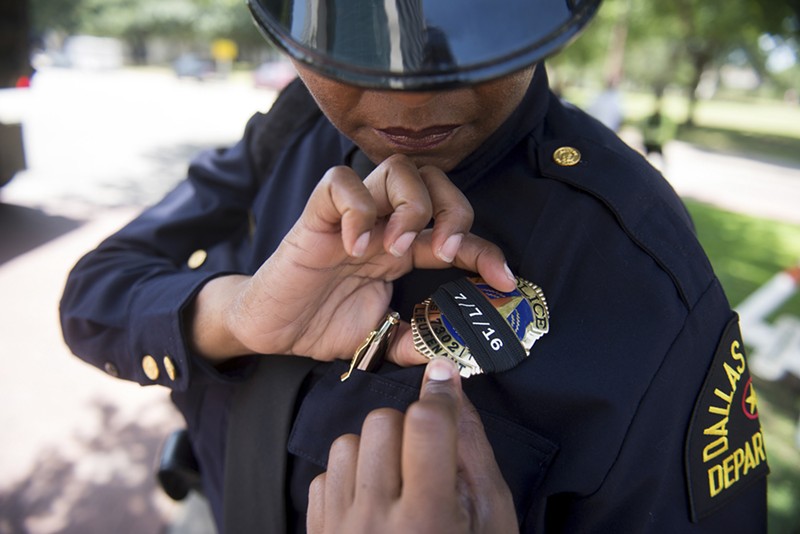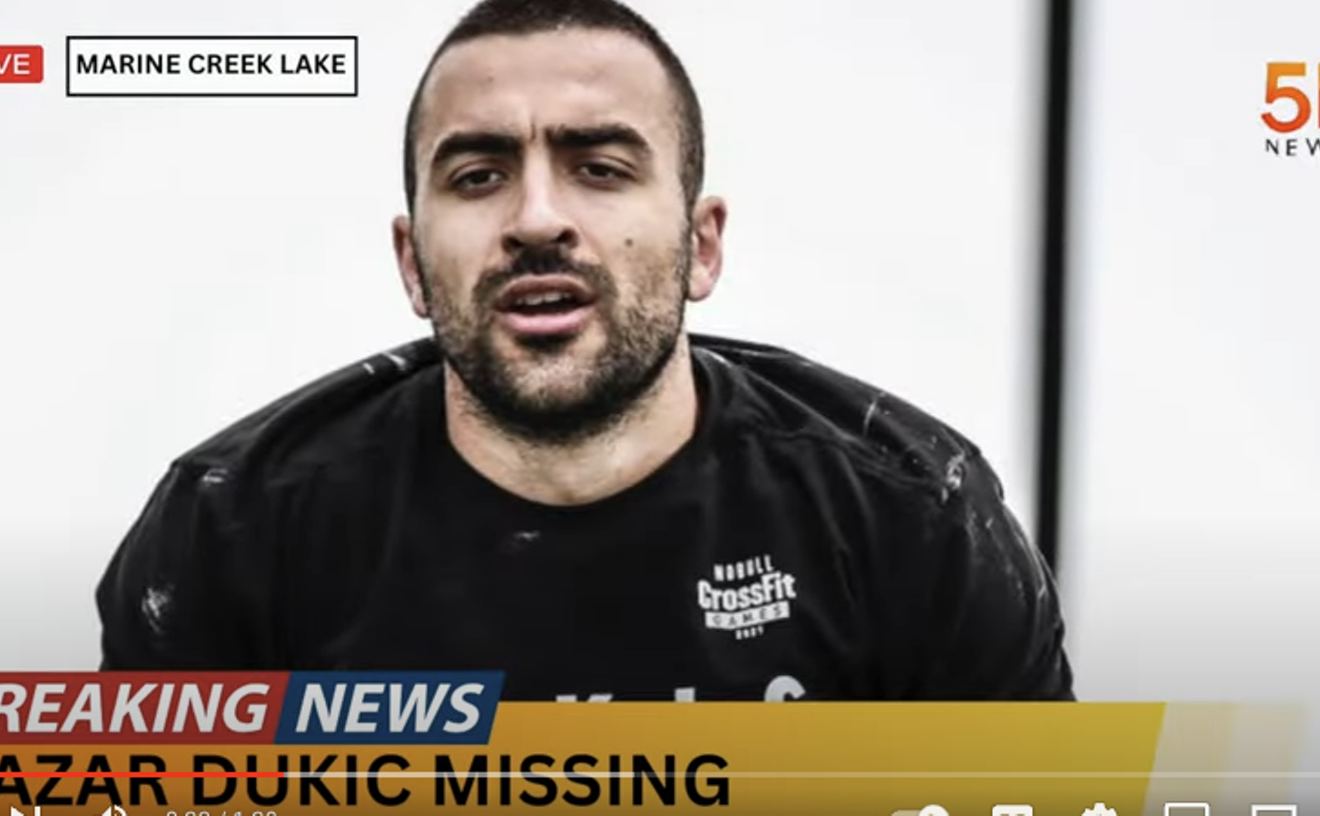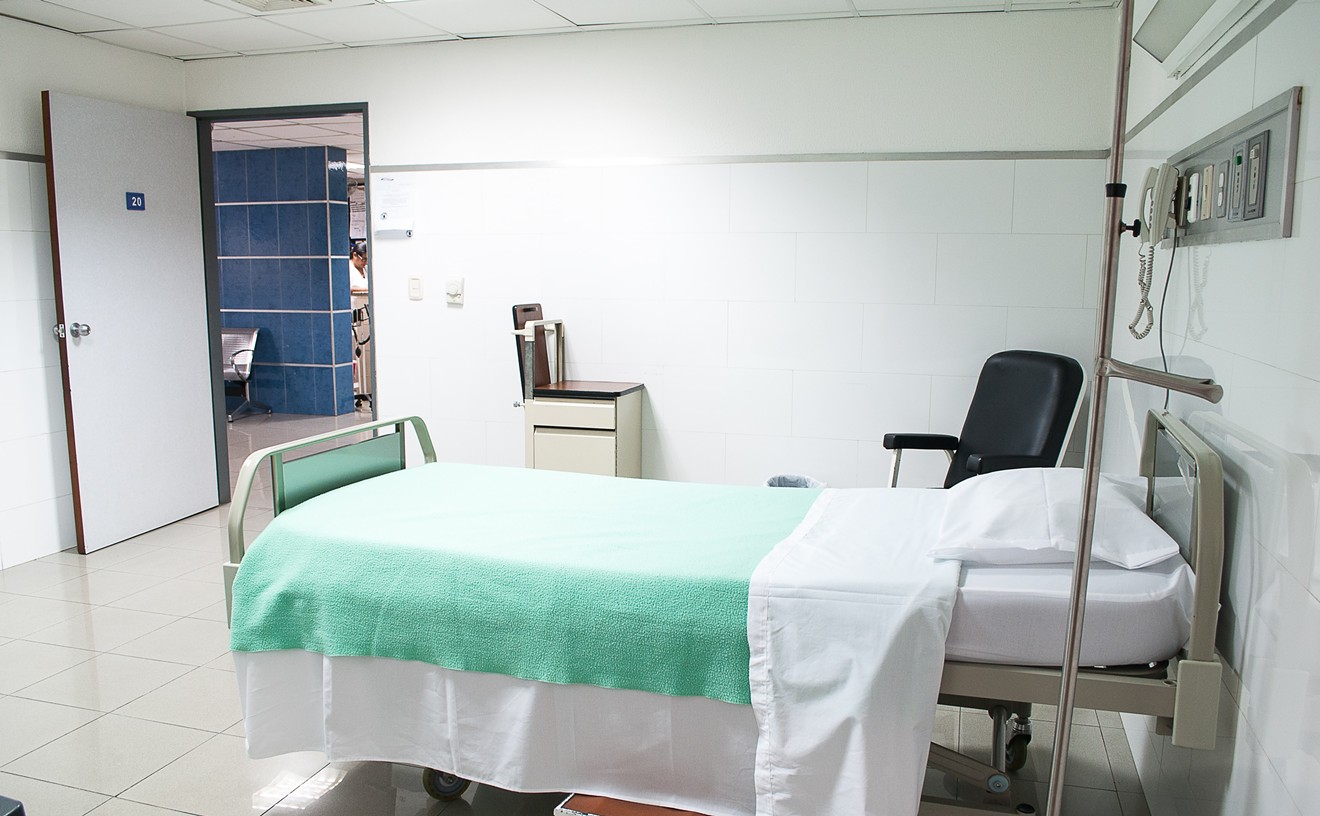Similar to how the country seemed to be ready to explode during the pandemic summer of 2020 following the murder of George Floyd by Minneapolis officer Derek Chauvin, the summer of 2016 had a wave of killings at the hands of law enforcement. A number of cases, including the killing of Alton Sterling by police in Baton Rouge on July 5, 2016, seemed to light a fuse in Johnson that detonated in the form of his orchestrated, murderous ambush.
But a literal explosive also went off that night in Dallas.
In the process of an hour-long standoff between police and Johnson in an El Centro College building, Johnson presented himself as a well-armed revolutionary who had planted bombs in other parts of the city. Deploying a robot packed with a pound of C-4 explosive, police remotely detonated the bomb, killing Johnson immediately.
“Police said they came up with the deadly plan in less than 20 minutes, after Johnson said that ‘the end was coming' and negotiations with him broke down," the Washington Post reported on July 21, 2016. Bodycam footage from an officer inside an El Centro fire escape shows just how on-the-fly the plan was. The video shows police and SWAT team members discussing the need for a back-up robot in case the one selected “goes down again.” At one point a SWAT officer says, “Y’all are welcome to blow up our robot if you need to.” A policeman replies matter-of-factly, “Oh, we’re gonna blow it up.”
In short order, news outlets online, in print and on television wondered if the so-called “killer robot” represented a new era in local law enforcement. Was Johnson denied due process? Was deploying a bomb-equipped robot the same as firing a police rifle? On July 9, 2016, The Associated Press published an article entitled “Killer robot used by Dallas police opens ethical debate,” which ran in many outlets across the country.“And I’ll do it again if presented with the same circumstances.” – Former Dallas Police Chief David Brown to CNN in 2016
tweet this
“‘If lethally equipped robots can be used in this situation, when else can they be used?” Elizabeth Joh, a University of California at Davis law professor who has followed U.S. law enforcement’s use of technology, asked in the AP article. “‘Extreme emergencies shouldn’t define the scope of more ordinary situations where police may want to use robots that are capable of harm.”
The department and Brown also received a great deal of praise for its handling of the attack. Three days after the downtown attack, Brown replied to the questioning and criticism of using the explosive to kill Johnson, telling CNN, “And I’ll do it again if presented with the same circumstances.”
The improvised decision to use a robot to carry a pound of plastic explosive to blow Johnson away was widely reported at the time as a first for a police force in the United States. And in the summer of 2016, the question of how forceful and well-armed police needed to be was a question being debated around the country. The notion that an unusual, extreme form of deadly force was used against a man in the wake of a Black Lives Matter protest against high-profile examples of police brutality wasn't lost on many.
Joe Pappalardo, then the editor in chief of the Observer, defended the decision by Dallas police. He saw the logic in some of the arguments being made by those who said the police should have waited Johnson out for as long as it took since he was barricaded in, away from easy access to others. That view, however, did not address the news that Johnson had told police he had a bomb.
“But then again, there's that bomb threat,” Pappalardo wrote in 2016. “When Johnson introduced explosives into the mix, it's hard to argue that ‘no one was in immediate danger.’ Any officer getting close to that part of El Centro would have been in danger of a possible explosion. That is not just some legal dodge, especially not when the emergency rooms are filled with victims and officers are trading gunshots with the perpetrator. It's a good reason to end the standoff in a deliberate, decisive way.”
But for all of the discussion surrounding the ethics or practicality of the bomb-equipped robot used by Dallas police in the months after the July 7 attack, they haven’t been much of a story since. The concerns raised by some about how many police departments would start using this new method have largely proven to be for naught.
One reason is a simple one: money. Bomb disposal robots are not cheap. In 2018 The Dallas Morning News reported that such machines used by police in Plano and Garland cost between $160,000 and $280,000. In a 2022 Department of Justice assessment of the somewhat lower-cost Vanguard bomb robot device, it was noted that "the most critical shortcoming of bomb-disposal robots is the high cost. Most bomb squads in the United States cannot afford them."
Add the financial factor to the rare number of scenarios in which blowing up an expensive robot to neutralize a threat is the obvious way to go, it's easier to see why killer robot usage has yet to proliferate in local police departments since 2016.
In 2022, the San Francisco Board of Supervisors approved the use by police of bomb-equipped robots to kill “when risk of loss of life to members of the public or officers is imminent and officers cannot subdue the threat after using alternative force options or de-escalation tactics,” according to CNN. Naturally, the measure was debated heavily, but aside from its Bay Area neighbor Oakland, whose police are pursuing a similar policy, killer robots have not been newsworthy for some time now. In much of the coverage of San Francisco's new policy, July 7, 2016, in Dallas is prominently noted.
As for the Dallas police, the bomb-equipped robot remains an option should they feel it necessary to use again. In an email to the Observer, DPD spokesperson Kristin Lowman explained that Texas law allows the department to keep the bomb robot option available and detailed how the Dallas police may use them.
“Robots can be used on tactical operations to communicate with suspects and de-escalate situations through negotiations,” Lowman states. “Their deployment inside areas that are deemed not secure increases safety for not only the public, but for our officers.”
In a written statement provided to the Observer, Dallas police Chief Eddie Garcia remembered July 7, 2016, for the lives that were lost, not for the way in which the standoff came to an end.
“The events of July 7 forever changed the Dallas Police Department. There is not a day that goes by that we do not think of our fallen," Garcia said. "On July 7, we will all pause to remember the sacrifice our brothers made and those who were injured while protecting our city courageously and with honor. Each day we put on our uniform, our badge, we honor and carry on their legacy by serving our city with respect, dignity and fairness. We will never forget.”













